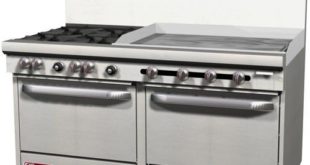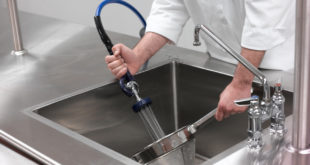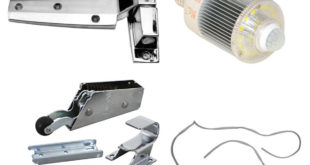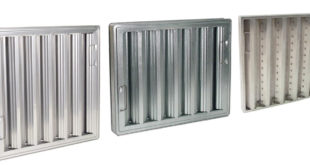In Kevin Loving’s last post he talked about how keeping a basic tool kit handy in your restaurant will make your life as an operator or manager alot easier. It’s almost certain you will use at least one of these tools everyday on the job. I spent over 5 years on the phones selling replacement parts to restaurants and at least half the times I asked a manger to measure something they either didn’t have a tape measure or didn’t know where it was. So if you haven’t started building your tool kit, now is as great a time as ever. That being said, you should also keep in mind having the tools is only half the battle when it comes to restaurant equipment maintenance.

Another conversation I had again and again with restaurant managers was the frantic Friday night call. I’m sure you know that call, many of you have probably made a few of them. That’s the phone call to your parts supplier at about 4:30 PM on a Friday night right before they are about to close. You’re in a panic, your fryer is down and weekends in your bar are the busiest times for you. Long story short, without a fryer you can’t serve all those wings and mozzarella sticks so you end up paying $80 in shipping to have a thermopile delivered on Saturday. Sure would have been a lot easier to have a spare thermopile in your office huh? By now you should see what I’m getting at. Maybe while you’re filling that tool box it wouldn’t be a bad idea to keep some critical replacement parts on hand as well. Here’s some to consider:
- Thermostats – keep a spare on hand for all your cooking equipment from fryers to ovens. An infinite control for your countertop warmers would be handy as well, along with some replacement dials.
- Burner Valves – these should be a no brainer as they are inexpensive. You’ll find them in range tops, broilers and some griddles. You might as well have some extra knobs for these too so you don’t need to use pliers all weekend to turn on your range.
- Elements – you can find these all around your kitchen. Need a hint? Check your soup warmers, steam tables, cheesemelters and the heat strips on your line. If you have a dishwasher that uses a booster heater it’s critical to have a couple of extras on hand.
- High Limits – these are critical for your fryer, some warmers and your dishwasher’s booster heater. Have a coffee maker? There’s a little one in there too.
- Switches – there’s at least one on much of your equipment. Think convection ovens, steamers, coffee makers and warmers.
- Pilots – these comprise of some pilot tubing and a pilot head. Some of these come together in a complete assembly. There are many different pilot assemblies so get the ones specific to your model. You can also keep some generic 18″ pilot assemblies on hand to use in a pinch.
- Ignitors – many times along with your pilot comes an ignitor. This is dependent on the type of equipment as the parts range from a push button spark ignitor to a flame sensor and ignition module.
- Gas Valves – there’s a variety of these as well. Depending on the equipment you can have a combination valve, a solenoid valve or any variety of safety valve.
You might need many of these or just a few. It depends on the size of your restaurant and how much equipment you have. Don’t feel like you need to get every possible part there is either. To start, determine which of your equipment you really can’t live without and get the critical parts for those.
A perfect example is a national chain I dealt with for years. They served biscuits with almost every breakfast, lunch and dinner they sold. If their proofer went down nobody was having biscuits and that was a signature part of their meals. I’d say that the proofer was a critical part of their daily business wouldn’t you? I managed to convince quite a few of the area managers to keep an extra thermostat, power switch and a humidity switch on hand just in case. Believe me when I tell you they were very happy that they did.
So go ahead and compliment that set of tools with some common equipment replacement parts. It’s one less thing you’ll have to worry about and you might just save yourself on some expedited shipping charges or an expensive weekend service call. Next time I’ll go over some parts that are important to have around for fixing things other than kitchen equipment.
Before taking action from the content or resources published here, we request that you visit and review our terms of use.
 Corner Booth Blog | TundraFMP Restaurant Supply, News & Equipment Blog
Corner Booth Blog | TundraFMP Restaurant Supply, News & Equipment Blog




I couldn’t agree more Don! Even if you don’t replace the parts yourself; at least you will have the right part on hand when the service company gets there.
The parts you mention might cost you a few hundred; however I can assure you a service company will charge you a LOT more for the same part. Spend a little money on the “front end”, it will be well worth it on some holiday weekend when you simply CAN’T be down!
Kevin Loving
(exiled this week in a foreign land!! Upstate New York (where almost all the restaurants are BARS)